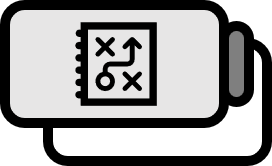Upstream and Downstream of the Base Sequence
Buildup
The orientation of a nucleotide sequence can be represented by numbering based on the position of carbon atoms in the sugar as shown in the image above. RNA and DNA specifically form chains through the phosphodiester bond between the 3’ carbon $3’$ and the 5’ carbon $5’$. Let’s suppose four bases are given with their carbon positions as follows.
$$ 3’C5' \\ 5’A3' \\ 5’G3' \\ 5’T3' $$
If these form phosphodiester bonds appropriately, one example of the resulting chain structure would be
$$ 5’C3'5’A3'5’G3'5’T3' $$
[ NOTE: $5’C3’$ has been reversed for bonding. ] If a chain structure is present, it naturally means that the 3’ carbon $3’$ and the 5’ carbon $5’$ are bonded, so this can be omitted. To simplify, $$ 5’CAGT3' $$ As you can see, one end of a nucleic acid base is always $5’$ and the other end is always $3’$. Most reactions related to DNA within a cell occur descending from 5’ to $3’$; therefore, the direction of the nucleotide sequence can be determined by identifying these two terminal carbons.
Definition
In a nucleotide sequence, $5’$ is called upstream, and $3’$ is referred to as downstream.
- From such concepts, the naming of upstream and downstream can be said to be very natural. Just as we read text from left to right, nucleotide sequences are also read flowing from upstream to downstream, which is why upstream is placed on the left and downstream on the right2.
Translated by Jae-Chang Jo, Dan E. Krane, Michael L. Raymer. (2007). Fundamental Concepts of Bioinformatics: p3~7 ↩︎

